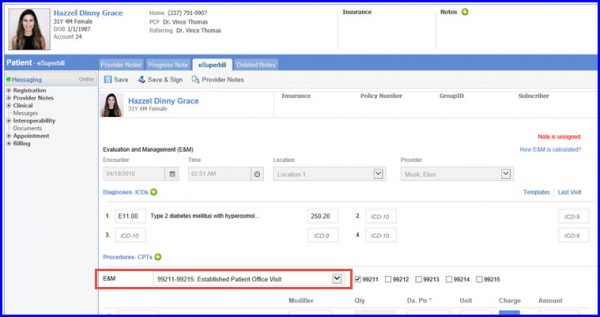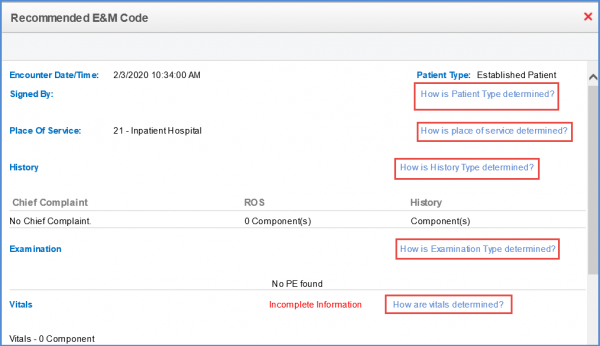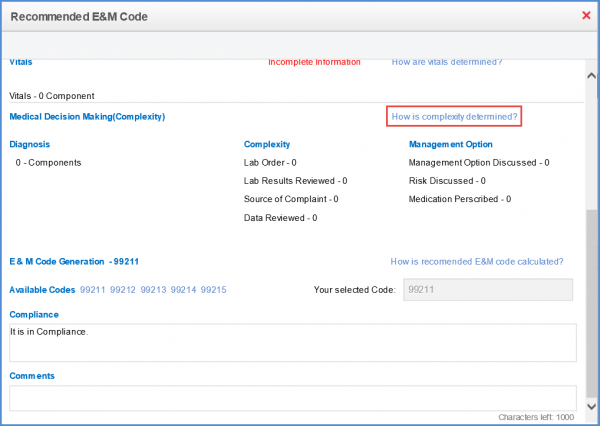How E&M Code is Determined?
On the eSuperbill screen, recommended code is automatically selected. User can also override this selection by selecting an E&M code manually. For instance, if user creates an eSuperbill against a progress note for an established patient, the E&M code appears automatically, provided that all the requisite information is available.
There are 4 pieces of information that determine and E&M code:
- Patient Type
- History Type
- Examination Type
- Complexity of the Case
However, CureMD has catered the scenario where CPTs having same values for all the predefined parameters is differentiated via place of service mapped with the location.
This helps the user automatically recommend E&M codes for House Calls and Assisted Living on eSuperbill.

To find out more about E&M codes click on ‘How E&M is calculated?” on the e-Superbill screen. The ‘Recommended E&M Code’ window will be displayed. Here, each link (query) leads to a pop-up window that reveals more information on how the different levels are evaluated and the overall E&M code is calculated by the system.



Under each heading, user can see the number of components that have been documented on the patients provider note. To see the clinical documentation required to reach the next level of E&M code, please click on one of the codes next to the Available Code Heading. The box under compliance contains the components that need to be added to be eligible for the next E&M code.

